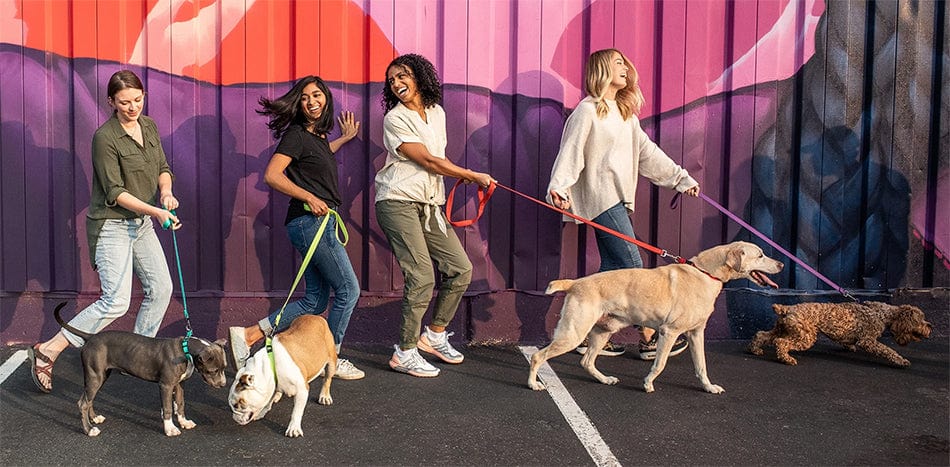Your cart is empty. Let's fix that!


Female dogs will have their first reproductive cycle once they reach puberty. Each cycle consists of several stages; the stage called estrus refers to when the female can become pregnant. Often, a pup that is in the estrus stage is said to be “in heat” or “in season.”
There are a few telltale signs of a dog in heat:
Dogs begin their heat cycles once they hit puberty, which can range between 6 months and 2 years of age depending on the size of the breed. Small dogs will reach puberty earlier than larger dogs. How often a dog goes into heat also varies based on their size. Canines will have 1-3 cycles per year, with the majority of dogs cycling twice a year (smaller dogs go into heat more often than larger dogs). On average, a dog will be estrus for 2-4 weeks. She is most fertile when her vaginal discharge becomes pink and watery, although it is possible for her to conceive at any time during her heat cycle.
The four phases of your dog’s heat cycle are proestrus, estrus, diestrus, and anestrus.
Proestrus is the first part of the heat period where your dog’s body prepares itself for mating. This phase usually lasts around 9 days. Her vulva will swell and you may notice a blood-tinged discharge. Your dog may also hold her tail close to her body and act more clingy towards you than usual. At this stage of the heat cycle, your dog will start to attract males, but she will not be receptive to them and may growl or bite if they try to mount her.
Estrus is the mating phase and usually lasts around nine days. During this time, her discharge will become less bloody. Female dogs will attract and accept males, and they will ovulate two to three days after mating. Your fur baby will likely mark spots in your home or outdoors with her urine. This sends the message that she is ready to breed. If an unneutered male dog is near, your female dog will likely present herself to him for mating.
This phase occurs directly after the “in heat” stage and lasts for about two months. Your dog’s body will either become pregnant or return to rest. Her vulva will return to normal size and the vaginal discharge will disappear.
Anestrus is the uterine repair phase. During this time, there is no sexual or hormonal behavior. This phase can last between 90 to 150 days before the next proestrus stage begins.
Most pet owners (with the exception of dog breeders) decide to spay their female dogs before their first heat. Some experts believe this reduces the risk of mammary cancer and other conditions. It also eliminates the possibility of unwanted litters of puppies that have to be taken to shelters or euthanized. Spaying your dog is the only way to guarantee that she won’t become pregnant.
If this is your first rodeo with a non-spayed dog, you may not know what to do when your dog is in heat. These simple tips will help make the process easier for you and your sweet pup.